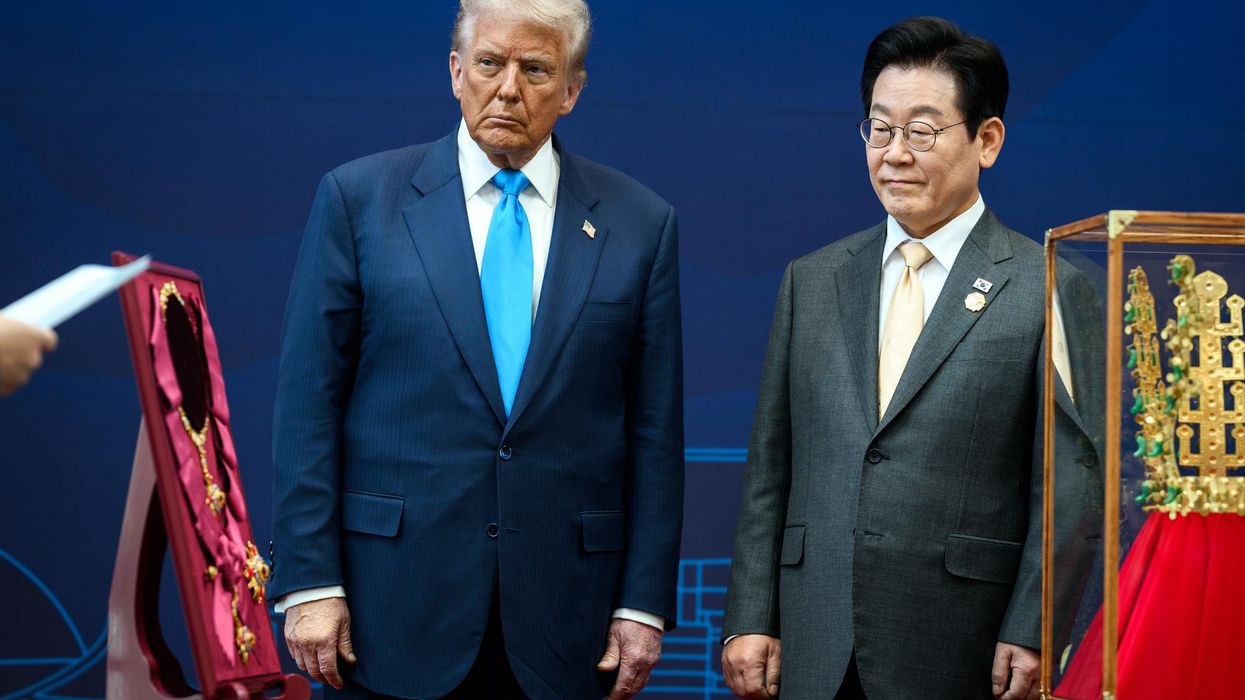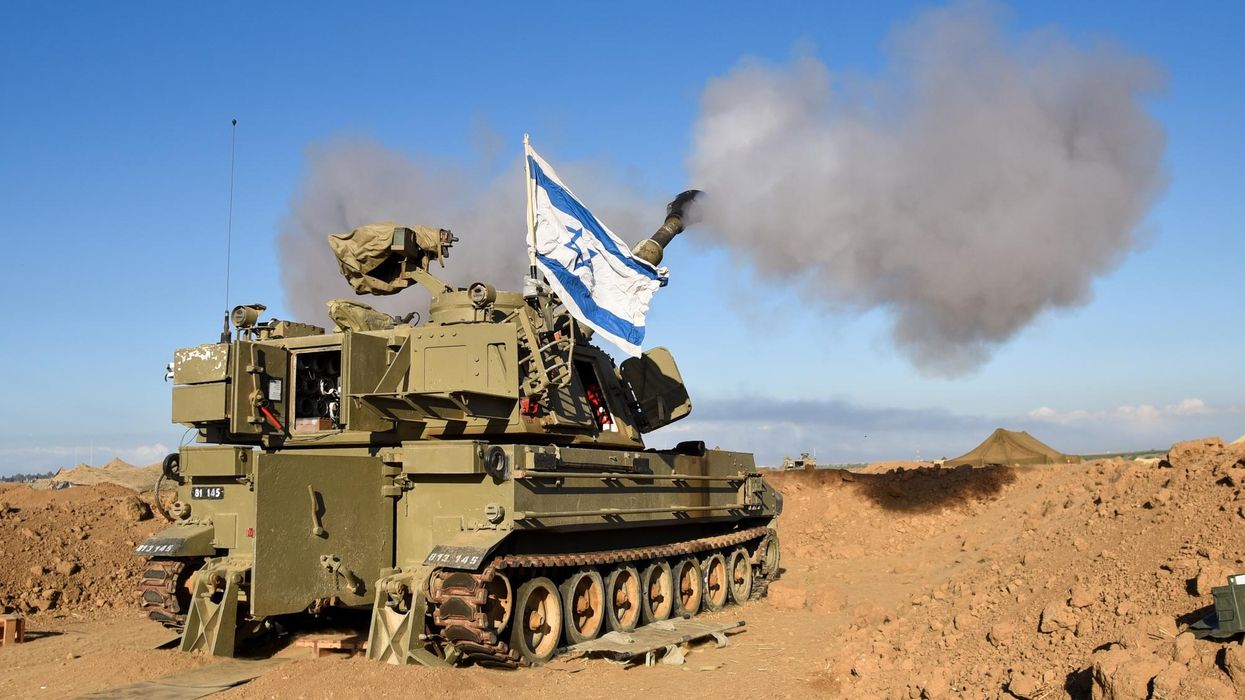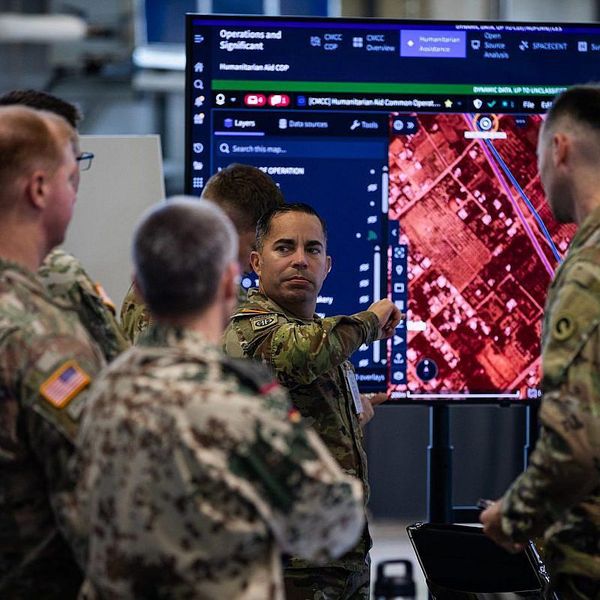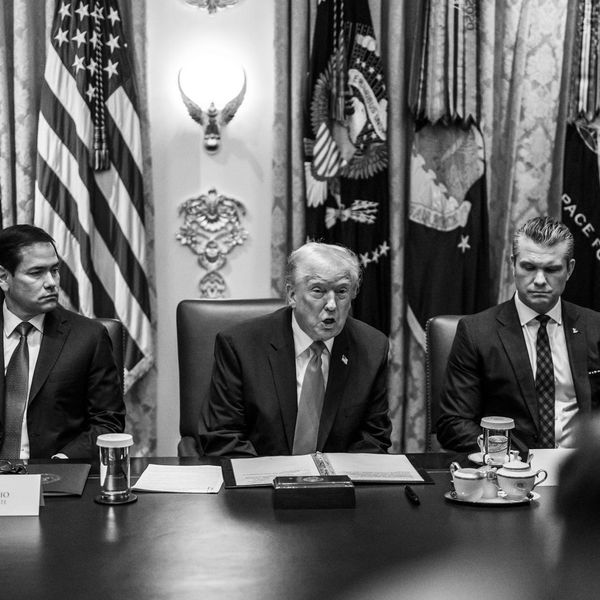A year ago this month an outbreak of Covid-19 on board the nuclear aircraft carrier Theodore Roosevelt forced the giant warship to take refuge at Guam. Not since World War II had a U.S. Navy carrier been knocked out of action. An attack from an unexpected quarter had sidelined the “Big Stick.” A minor episode in the larger debacle of the pandemic, it nonetheless merits reflection.
The TR owes its existence to the military buildup ordered by Ronald Reagan during the last decade of the Cold War. In 1989, soon after the “Big Stick” was commissioned, with the Soviet economy stagnant and the Red Army’s decade-long military effort to pacify Afghanistan having failed, the Soviets decided to call the whole thing off. In late 1989, the Berlin Wall fell and the “long twilight struggle” abruptly ended. In theory, this astonishing turn of events might have prompted policymakers in Washington to rethink the prevailing national security paradigm. No such rethinking occurred.
At this juncture, an oracle spoke. Just as the Cold War was drawing to a close, NASA scientist James Hansen testified before the U.S. Senate Committee on Energy and Natural Resources. In brief remarks, Hansen invited the attention of committee members to “three main conclusions.”
Number one, the earth is warmer in 1988 than at any time in the history of instrumental measurements. Number two, the global warming is now large enough that we can ascribe with a high degree of confidence a cause and effect relationship to the greenhouse effect. And number three, our computer climate simulations indicate that the greenhouse effect is already large enough to begin to affect the probability of extreme events such as summer heat waves.
According to the New York Times, Dr. Hansen’s provocative testimony “sounded the alarm with such authority and force that the issue of an overheating world has suddenly moved to the forefront of public concern.” Unfortunately, the reporter’s conclusion was itself wildly overheated. Hansen’s findings did attract notice, but when it came to basic national security policy, he was ignored.
What interested Pentagon leaders instead was a careful redefinition of purpose designed to avert substantive change and forestall any diversion of resources from the national security apparatus. The idea was to tweak basic policy while preserving its essentials. As a result, a military establishment primarily intended to deter and defend now became an instrument of power projection.
“Forward Presence” and “Crisis Response” comprised the cornerstones of this new strategy. Keeping U.S. forces “deployed throughout the world” would demonstrate “commitment, lend credibility to our alliances, enhance regional stability, and provide a crisis response capability.” Forward presence and crisis response went hand in glove. Taken together, they would enable the United States to deal with any problems that might crop up anywhere on the planet, keeping Americans safe and enabling them to enjoy freedom.
Successive versions of the Pentagon’s National Military Strategy featured slogans or catchphrases, accompanied by colorful graphics, all intended to reassure one and all that the U.S. military was fully cognizant of how the global security environment was changing. None considered the possibility that nature itself might pose a threat.
This does not mean that the armed services were standing still. The army, navy, and air force (less so the Marine Corps) were more or less continuously engaged in recapitalizing, which in practice meant replacing aging machines with improved and updated versions of the same thing—better tanks, better fighter planes, better long-range bombers.
As anyone who has visited a modern aircraft carrier (or watched the movie "Top Gun") will attest, these are magnificent machines, throwbacks to an era when the United States made the finest of whatever there was to make. But as suggested by the Theodore Roosevelt taking sanctuary in Guam as the COVID-19 pandemic was exploding, these artifacts retain questionable relevance to the emerging security environment. This describes exactly the problem facing the U.S. military as a whole.
For the officers who lead that military, imbued since the day of their commissioning with the conviction that theirs is the mightiest armed force in all of history, even to hint that their services might verge on becoming superfluous is tantamount to blasphemy. For elected officials, especially those with major weapons contractors located in their home districts, any such suggestion is similarly intolerable. To patriotic citizens schooled in the belief that the officials responsible for shaping basic national security policy know what they are doing, the very idea that U.S. forces might be waging war against the wrong enemy in the wrong place is almost inconceivable — at least it was until COVID-19 caught those officials entirely off guard.
As far back as World War II, the term “threat,” when used in a national security context, connoted immediate and existential danger, with first Nazi Germany and then the nuclear-armed Soviet Union as primary examples. Even when the Cold War ended, the term retained that connotation, despite the fact that adversaries now classified as threats posed dangers that were neither immediate nor existential. No matter: The old usage persisted, mere accuracy taking a backseat to utility as a vehicle for scaremongering and justifying copious funding for the Pentagon.
During the 1990s, with no adversary comparable to the Soviet Union immediately at hand, the Pentagon devised the phrase “rogue nation” to serve as a generic threat, with Saddam Hussein’s Iraq the preferred illustrative example. After 9/11, “rogue nation” fell out of favor. Drawing on memories of World War II, George W. Bush created out of whole cloth an Axis of Evil, with Iran and North Korea now joining Iraq to comprise the threat. Today, 20 later, with Iraq merely a mess rather than a source of danger, Iran retains a place on Washington’s semiofficial threat roster, as does North Korea. Yet that roster has now undergone further expansion, with post–Soviet Russia and the People’s Republic of China recent additions.
What is the common denominator shared by these various threats to U.S. national security? Crucially, they are nation-states and they are far away. As such, they qualify as what we might call Pentagon-preferred adversaries, their very existence justifying a military establishment that is still configured to project power against distant enemies.
Here we arrive at the abiding, unspoken premise of basic U.S. policy, spanning both the Cold War and all the years since: the conviction that containing or deterring or coercing nation-states that are both far away and classified as dangerous holds the key to keeping Americans safe at home and guaranteeing their freedom. The existence of such distant adversaries provides the raison d’être for the entire national security state.
It remained for COVID-19 once and for all to truly drive home the shortcomings of the existing national security paradigm. In 2020, pursuant to that paradigm, the United States was spending approximately a trillion dollars per year. As the coronavirus pandemic ravaged the nation, that lavish expenditure of resources was all but irrelevant to the problem at hand.
The Department of Defense did mobilize a pair of hospital ships that made a token contribution to treating the sick in New York and Los Angeles. State governors ordered small contingents of National Guard troops to help erect temporary treatment facilities and perform support tasks. And the Air Force Thunderbirds and the Navy’s Blue Angels conducted flyovers of major cities to express the Pentagon’s appreciation for the gallantry of medical personnel and first responders. While these gestures might have been appreciated, their substantive value was negligible.
As the coronavirus has taken the lives of more than a half-million Americans and compromised the freedom of the rest, virtually the entire U.S. national security apparatus has remained on the sidelines — just like the “Big Stick” at Guam in the spring of 2020. There’s a lesson to be learned here.
















